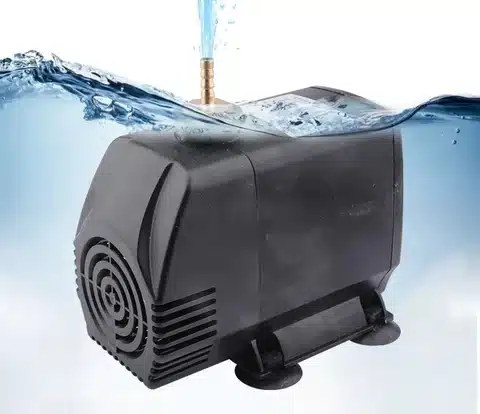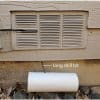Is your plumbing acting up again? Maybe you’ve decided to take matters into your own hands. You’re ready to clobber that old asthmatic and wheezing water pump and replace it with something more reliable.
Before you do anything drastic, you’ll first need to explore your options. That way, you can make a change for the better and find a pump that will run smoothly for many years.
Examine Your Water Pump Requirements
To make sure you choose the right pump for your plumbing system, you need to determine the water pressure first. That way, you can find the pump that is best suited to your needs residentailly or commercially. Red lion water pump systems come in various models to fit the needs of the water you use throughout the day.
By looking at pumps online, you’ll find out that the choice of a water pump does not have to be complex. For example, do you have a well?
If so, you’ll need to choose a shallow or deep pump. A shallow pump is generally sufficient for most homes. However, if your well is over 25 feet deep, you should consider a deep well pump. These pumps can draw water from 100 feet or more below the ground.
What is the Pump’s GPM?
Next, find out more about a pump’s GPM, or gallon per minute rating. In other words, how does the water flow? While a higher GPM moves more water, it also means a higher consumption of energy. Therefore, you’ll need to assess your fixture requirements.
You’ll also want to take into account certain features, such as built-in pressure switches, overload protection, and corrosion-resistant materials or components. This is especially important if you’re buying a pump for a well. Add-ons help ensure better pump operation and minimal maintenance and repair issues over time.
Consider the Pump Size
Also, remember that buying a too-small pump will not provide a sufficient flow of water through your fixtures. This can lead to sputtering faucets and showers, or fixtures that go from scalding hot to freezing cold in a matter of seconds. Clearly, this is not a good situation.
However, you don’t want to choose a pump that is too big either as doing so will cause you to spend more money and waste energy. It also leads to cycling, which shortens the pump’s life.
So, how do you choose the right pump size?
To determine the pump size you need, calculate the GPM requirement. Most residences can use a pump with a GPM that ranges from 5 to 10.
According to researchers at Pennsylvania State University, a minimum flow of 6 GPM is recommended for single-family residences. This type of flow rate provides 360 gallons of water per hour, which is enough to meet most homeowners’ peak demands.
Submersible Pumps
If your pumping needs involve submerging the pump in liquid while it operates, then a submersible pump is what you’ll need. Submersibles are particularly suitable for applications that involve sump pits, wells and pools as they all are designed to function underwater. The motor and all the components are sealed off to prevent any risk of short-circuiting.
Submersible pumps are highly efficient in moving large volumes of water. If you find yourself in a situation where you need to drain a flooded basement or you have to empty a pool ,a submersible pump will get the job done swiftly if not impressively
Centrifugal Pumps
When it comes to moving volumes of water for commercial or industrial use, centrifugal pumps typically take the lead. By spinning water at specific speeds, these pumps offer exceptional flow rates and pressure–making them perfect for applications such as fire sprinkler systems and municipal water supplies – both of which demand heavy duty performance.
The pumps should be primed to prevent problems with overheating.
Ultimately the key is to select a pump that aligns with your exact requirements. Take into consideration the type and volume of liquid you need to move. Ensure that the flow rate, head pressure and pump type specs match your needs as well.
Additionally, you’ll need to consider energy efficiency.
How Is the Pump Powered?
You’ll also need to assess the power of the device. If the pump is electric, make sure the voltage and amperage are sufficient to handle the load. Determine the flow rate so you can pick a pump with the appropriate horsepower.
The horsepower represents the power that drives the motor to operate the pump. Therefore, if your pump requires more horsepower to operate, the volume (flow) and pressure (PSI) also increase.
However, these factors do not determine the proper pump size. Nevertheless, a larger system usually needs a larger pump with increased horsepower to adequately function.
While electric water pumps are used indoors, gasoline water pumps are designed for outdoor use, or water transport on farms (for irrigation) and at job sites.
What Materials are Used in the Pump’s Design?
Spend the extra money for quality materials, such as cast iron or stainless steel, as they last longer and the pumps, in turn, will break down less often.
Making a Brand Selection
Another factor to consider is the reputation of the brand. A large number of brands make water pumps. However, not all of them are equal in terms of durability and performance.
Take some time to research reviews and ratings to find a brand, such as Red Lion, that is known for producing long lasting and reliable pumps.
The location where you install your pump plays a role in its efficiency and lifespan as well. Opt for a ventilated area that is free from excessive moisture or heat buildup. Make sure that the pump is installed somewhere that is easy to access for upkeep.
Don’t squeeze your pump into an attic without insulation or a small and cramped closet. Doing so will only shorten the life of the pump.
Why Red Lion is an Ideal Option
When it comes to installation and maintenance Red Lion pumps offer ease and convenience.
Furthermore, Red Lion also provides energy models that can help you consume less energy and save money.
Don’t spend more for a subpar pump that wastes energy and leads to more repairs.
Maintain an efficient plumbing system. Choose a water pump that meets your water transport requirements and overall plumbing needs at the same time.








